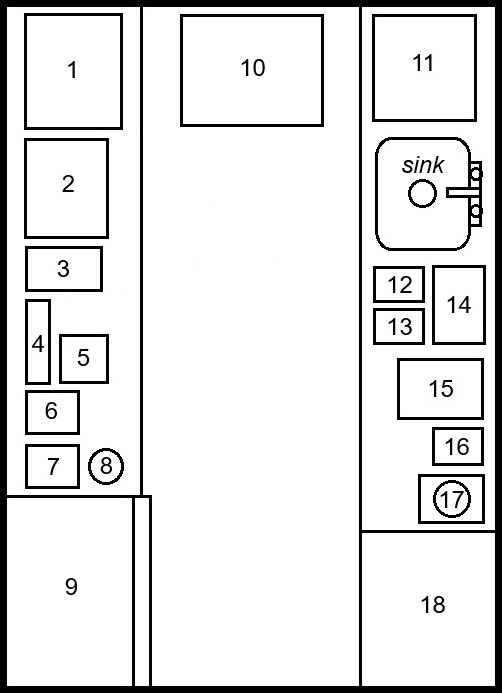Research-grade genetic engineering can be conducted with under $5,000 worth of laboratory
equipment.
Here, I outline the essential equipment required for routine molecular cloning and cell
cuture techniques.
This lab setup can be achieved for as little as $4,830, excluding reagents, consumables, and overhead costs.

| 1. Incubator | 10. Refrigerator (4°C)/Freezer (-4°C) |
| 2. Microwave | 11. Autoclave |
| 3. Heat block | 12. Electrophoresis gel tray |
| 4. Micropipettes | 13. Electrophoresis power supply |
| 5. Hot plate/stirrer | 14. UV transilluminator |
| 6. pH meter | 15. Thermal cycler |
| 7. Analytical balance | 16. Centrifuge |
| 8. Vortex mixer | 17. Microcentrifuge |
| 9. Laminar flow hood | 18. Freezer (-20°C) |
1. Incubator
For culturing bacteria or cells at controlled temperatures (e.g. 37°C for E. coli). Shaking incubator for
liquid cultures.
2. Microwave
For melting agarose or preparing media.
New: $100 (Walmart)
3. Heat block
For incubating samples at specific temperatures.
4. Micropipettes
Transfer of small volumes. Ensure adjustable in 0.1-1000 µL ranges. Manufacturer calibration and servicing
recommended if
purchased used.
5. Hot plate/stirrer
For heating and mixing solutions. Ensure large enough to accomodate 2L flask.
6. pH meter
For preparing buffers and media. Recommend buying new.
New: $300 (Amazon)
7. Analytical balance
For precise weighing of reagents. 0.1mg readability and 220g max capacity is sufficient. Recommend buying
new.
New: $600 (Amazon)
8. Vortex mixer
For mixing small volumes of samples.
9. Laminar flow hood
For sterile work with cell cultures. Portable benchtop model. Working aspectically next to a butane bunsen
burner is a viable alternative.
New: ($200 Amazon)
10. Refrigerator (4°C)/Freezer (-4°C)
For storing reagents and samples. Ensure refrigerator is large enough to store large flasks and
containers.
New: ($300 Amazon)
11. Autoclave
For sterilizing equipment, media, and solutions. A large pressure cooker is an afforable option. Ensure
large enough to accomodate 2L flasks
New: ($200 Walmart)
12. Electrophoresis gel tray
For separating DNA. Tray holds the agarose gel matrix and buffer.
Used: $300 (eBay),
New: ($1,000 Thermo
Scientific)
13. Electrophoresis power supply
Provides adjustable voltage/current to drive the electrophoretic separation.
Used: $150 (eBay),
New: ($1,000 Thermo
Fisher)
14. UV transilluminator
For visualizing and imaging DNA separated by gel electrophoresis.
Used: $300 (eBay),
New: ($700 Benchmark Scientific)
15. Thermal cycler
For amplifying specific DNA sequences. Mineral oil can be used as an alternative to a heated lid in a
thermal cycler.
16. Centrifuge
For spinning larger-volume samples (5-50 mL tubes) at 3,000-10,000 RPM. An adaptor or rotor replacement can
be used to handle microcentrifuge tubes.
17. Microcentrifuge
For spinning 0.2-2 mL samples to separate DNA or proteins. Up to 13,000-16,000 RPM.
18. Freezer (-20°C)
For storage of reagents, enzymes and samples at -20°C.
New: ($500 Amazon)